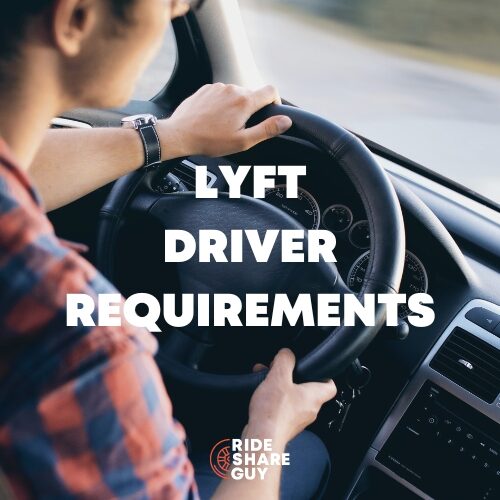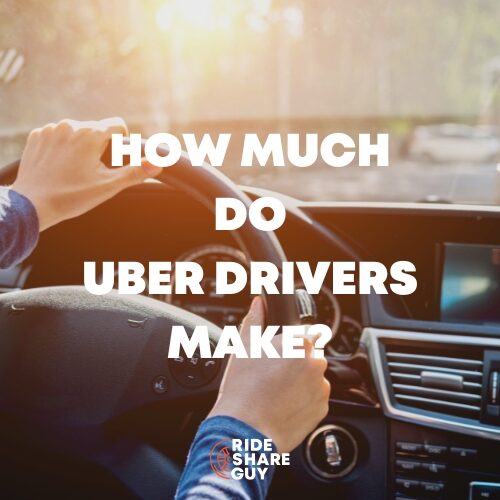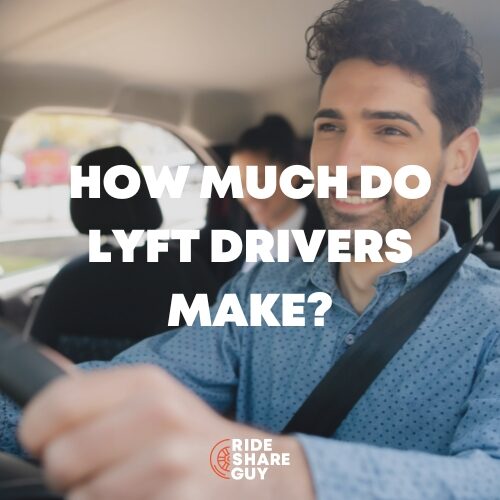Uber, Lyft and DoorDash have been around for a while now, but they still continue to struggle with turning profits. Senior RSG contributor Sergio Avedian uses his Wall Street background to look into reasons why Uber, Lyft and DoorDash have not yet achieved profitability.
I feel like I have a unique background to tackle this subject. As a six-year veteran driver for many on-demand app-based gig companies, I have seen the good, the bad, and the ugly.
The good has always come when gig companies first launch, offering heavy incentives to onboard “side hustlers” to their platforms. Drivers make good money for a job that seems easy and millions of people gravitate to the freedom and flexibility these gigs offer.
However, a few years into it, after reaching scale, these gig companies start cutting compensation, drivers quit and the cycle of onboarding starts all over again. The churn for Uber, Lyft and DoorDash is astronomical, to the tune of 60-70% in less than a year.
I always thought: how can a business survive with such high turnover rates? Many established Fortune 500 companies don’t even come close to the churn rates of today’s gig economy companies.
After all, there’s a finite number of people who are willing to transport people and goods in this country. We’ve seen driver shortages due to the pandemic and again now due to high gasoline prices.
I am shocked that, for over a decade, Uber and Lyft have chosen this path as opposed to paying their drivers fairly and keeping them on their platforms, in turn saving billions of dollars in marketing costs for onboarding “new earners.”
Note: This is not financial advice and do your own due diligence when considering making any investments.
What Do Uber, Lyft and DoorDash Offer?
Uber, Lyft and DoorDash have a zero asset business model, meaning other than renting a whole bunch of servers from Amazon Web Services (AWS), they don’t own anything. The value is in the brand and data they’ve collected on hundreds of millions of people.
With this in mind (low overhead), why are they not profitable? Uber does 15 million rides a day globally, where’s the money?
These gig companies ask their drivers to bring the tools of the trade to work, their cars. As so-called Independent Contractors (ICs), millions of people oblige happily without understanding the true costs associated with the job. Drivers are responsible for car payments, rideshare insurance, gasoline, and maintenance, plus the depreciation that comes with putting thousands of miles on their vehicles on a monthly basis.
Under these circumstances, Uber, Lyft and DoorDash seem like no-brainer investments. After all, they all are middlemen connecting the consumer and drivers through their gamified apps. In the meantime, they take a share of the passenger fares.
Consumers have gotten used to paying $30 for a 3-mile ride during bar rush hour as well as $20 for a cup of coffee. Through their algorithms, millions of rides and deliveries are completed on a daily basis. So, how are these companies still losing money?
All these companies boast about “disruption” through their technology. Ultimately, what are Uber and Lyft? Uber is disrupting taxis, food delivery, and now freight which have all been historically razor-thin margin businesses. Uber depends on its technology to squeeze margin out of the rock. Maybe that’s the first problem?
Uber, Lyft and DoorDash Latest Earnings
Uber and Lyft went public in the spring of 2019 at $45 and $72 respectively and weathered huge changes in consumer demand as the pandemic hit. DoorDash went public in late 2020, priced at $102. This year has so far seen all companies worried by the impact of rising fuel prices on driving costs and the squeeze placed on consumer finances by soaring inflation rates.
At first glance, Uber and Lyft look similar, but there are significant differences between them. First is their sizes.
Uber has a market capitalization (market cap) of $48.79bn and controls over 70% of the US rideshare market. Lyft, with its more modest market cap of $6.93bn, has 29% of the market share. According to Capital.com, “Uber also operates globally and is increasingly powered by its delivery business. In fact, the company saw more bookings for delivery services than it did for passenger trips in the first quarter of 2022.”
Lyft is United States and Canada-based, with revenue driven by rideshare and lately delivery of goods.
On one hand, Uber and Lyft have showed signs of a post-pandemic recovery. Uber saw its numbers more than double to $6.9 billion, and Lyft reported Q1 revenue of $875.6 million, an increase of 44% year-on-year. The majority of Uber’s revenue came from delivery, which represented 52.5% of its total revenue for the quarter. Lyft’s revenue, of course, was entirely generated by its mobility options (since Lyft does not offer delivery).
As the Capital.com article makes abundantly clear:
Despite rising revenues, both companies reported a net loss. Uber posted a $5.6bn loss related to equity investments [Didi, etc.] while Lyft reported a net loss of $196.93m, down from $427.3m in the same quarter a year ago.
-Hermione Taylor, reporter for Capital.com
According to CNN, DoorDash saw its order volume grow 23% in the first quarter of 2022 compared to the same period in 2021, and its revenue for the first quarter also jumped 35% from last year. While DoorDash is still growing, growth has slowed since the height of the pandemic.
Uber, Lyft and DoorDash’s Stock Performance to Date
How are Uber, Lyft and DoorDash doing on the stock market? Take a look at the shots below. While the graphs are horrible-looking, the market in general has been suffering for the past few months.
Uber is down about 50% from its IPO and 62% from its all-time high, Lyft is down about 75% from its IPO and 82% from its all-time high.
DoorDash is down about 35% from its IPO and 75% from its all-time high. On the S&P500, it’s down about 20% from its all-time high reached just a few months ago.
Takeaways for Drivers
I am not an analyst and I do not make recommendations for investments!
All the fancy terms I hear from these companies’ executives during each conference call make me squirm. Network effect, and Power of the Platform are my two favorites.
Is it possible that none of this makes any sense? However, analysts on Wall Street seem like they have bought into this rhetoric completely. Most have BUY ratings, fascinated by the size of the Total Addressable Market (TAM) and other factors.
Maybe they should ask drivers what they are seeing on the front lines to get more of an idea how loyalty means nothing as a worker and consumer. How Network Effect and Power of the Platform are meaningless terms. Maybe the headwinds TNCs faced during the pandemic are not transitory, maybe global businesses can not be built and run profitably on the backs of millions of migrating, nonloyal “side hustlers.”
I haven’t even factored in the potential ramifications of a looming recession on all gig company financials. During these inflationary times, consumer spending habits change drastically. People may decide to save their disposable income, or what’s left of it, and not pay $30 for a three minute ride or $25 for burritos.
I am not an equity analyst, just a driver and a consumer who uses all three platforms. I have personally cut down on my spending as well as driving for these companies.
And finally, will the disruptors be disrupted by autonomous vehicles and delivery robots? There are a lot of established startups (Zoox, Waymo, Cruise, Aurora, Coco, Dax, Serve etc.) with billions in funding headed for Uber, Lyft and DOorDash. The revolution in transporting people and goods is here, watch out!
What do you think about investing in Uber, Lyft or DoorDash? Have you done it? Why or why not?
-Sergio @ RSG





